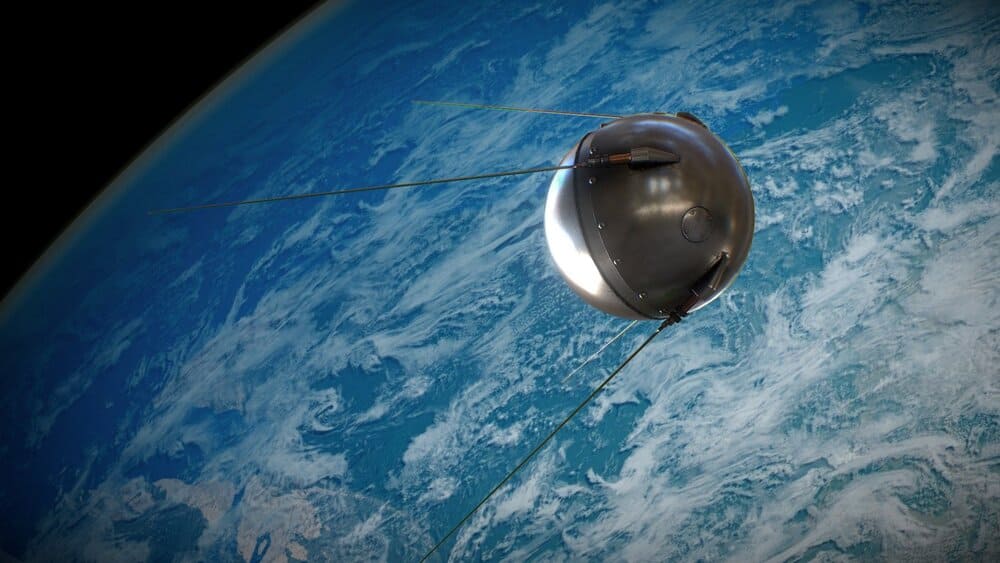On October 4, 1957, the Soviet Union launched the world’s first artificial satellite, Sputnik 1, marking a significant milestone in the history of space exploration. This event initiated the space age and triggered a wave of technological advancements and international interest in space travel.
Design and specifications
Sputnik 1 was a spherical satellite, 58 centimeters (about 23 inches) in diameter, with four external radio antennas to broadcast radio pulses. It had a highly polished aluminum alloy shell and weighed approximately 83.6 kilograms (184 pounds). The satellite’s simple design was robust enough to survive the harsh conditions of space and transmit signals back to Earth.
Launch and orbit
Sputnik 1 was launched from the Baikonur Cosmodrome in Kazakhstan using an R-7 intercontinental ballistic missile. It was placed into a low Earth orbit, with an apogee of 939 kilometers (583 miles) and a perigee of 215 kilometers (134 miles). The satellite orbited the Earth every 96.2 minutes, traveling at a speed of about 29,000 kilometers per hour (18,000 miles per hour).
Significance and impact
The launch of Sputnik 1 had profound implications for science, technology, and geopolitics. It demonstrated the feasibility of space travel and the potential for satellites to serve various purposes, from scientific research to communication and navigation.
Scientific advancements
Sputnik 1 provided valuable data on the density of the upper atmosphere and the propagation of radio signals in space. It paved the way for future satellites and space missions, contributing to our understanding of space and Earth’s environment.
Technological progress
The success of Sputnik 1 showcased the Soviet Union’s technological capabilities and spurred a technological race between the USSR and the United States. This competition led to rapid advancements in rocket science, satellite technology, and eventually manned space missions.
Geopolitical influence
Sputnik 1’s launch had significant geopolitical ramifications. It intensified the Cold War competition and led to the United States accelerating its own space program. This culminated in the creation of NASA in 1958 and the eventual landing of American astronauts on the moon in 1969.
Public awareness and education
The event captured the world’s imagination and highlighted the importance of science and technology education. It inspired a generation of scientists and engineers and led to increased funding and support for space exploration and related fields.
Sputnik 1’s launch was a monumental achievement that marked the beginning of human endeavors in space. It demonstrated the potential for exploration beyond our planet and laid the groundwork for the vast array of satellites and space missions that followed. The legacy of Sputnik 1 continues to influence space exploration and technological innovation to this day.


